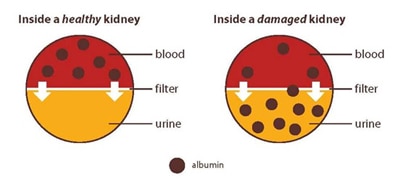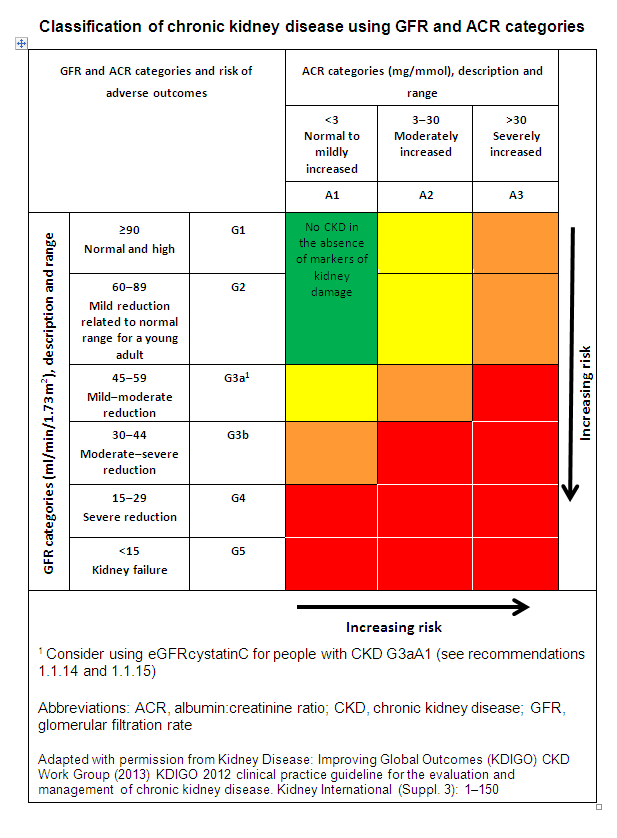What is the urinary albumin-creatinine ratio (uACR)?
Albumin is one of the major proteins in the blood and is too large to be filtered by the kidneys.
So healthy kidneys keep the albumin in your blood, whilst filtering the creatinine out into the urine. So, there should be very little or no albumin in your urine.
The urine albumin-creatinine ratio (uACR) test measures the amount of two different substances in your urine – albumin (a protein) and creatinine (a waste substance).
The uACR is calculated by dividing the amount of urine albumin by the amount of urine creatinine to find the ratio.
Why is uACR measured?
It is done as albumin in the urine is a sign of kidney damage in CKD, especially with the glomeruli (1 million filtering units per kidney) in the outer area (cortex) of the kidney.

Urine ACR is one of the three key investigations in a patient with suspected CKD. The other two are: (1) blood creatinine level (and the estimated GFR (eGFR) that is calculated from it); and, (2) renal (kidney) ultrasound.
It is also used to monitor patients with diabetes, as it can be an early sign that they will develop CKD at a later date.
Normal uACR and microalbuminuria
A ‘normal’ uACR level is lower than 3 mg/mmol. For this test, a lower number is better. A uACR level of 3 mg/mmol or higher is called ‘microalbuminuria’. It can be a sign that you will get higher levels of albuminuria later.
Categories (levels) of albuminuria
There are three levels that carry these names:
- A1 = <3 mg/mmol. Normal, as it is normal to have a very small amount of albumin (and protein) in the urine
- A2 = 3-30. Mild albuminuria
- A3 = >30. Moderate-to-severe albuminuria.
In nephrotic syndrome, uACR is usually >220 mg/mmol. In other words, in nephrotic syndrome there are very high levels of albuminuria. >100 mg/mmol/L is often called ‘nephrotic range’, i.e. on the way to nephrotic syndrome.
“Heavy proteinuria is the hallmark of glomerular disease.”
Urine ACR and GFR/CKD
Urine ACR is combined with the CKD stage (Grade or ‘G’ 1-5) to estimate the outlook for someone with CKD. In other words, CKD can be described in one patient as ‘CKD G4 A3’, and that has a worse outlook than for a patient with ‘CKD G2 A1’. So a higher level of albuminuria worsens the outlook as does a lower GFR.

Summary
We have described what is the urinary albumin-creatinine ratio (uACR). We hope it has been helpful.
Last Reviewed on 25 November 2023
